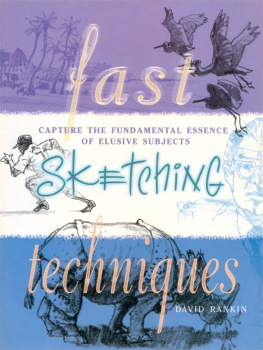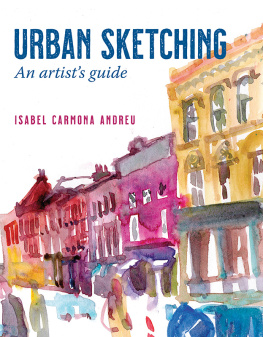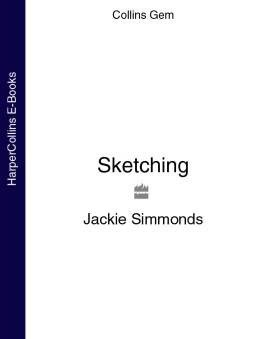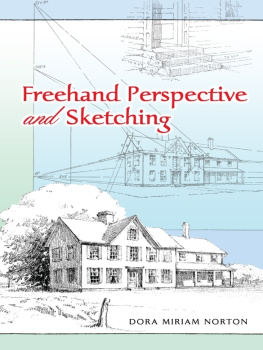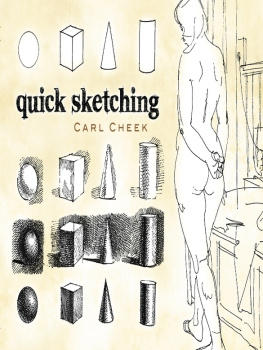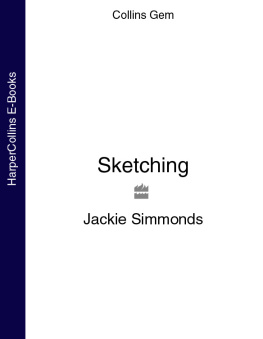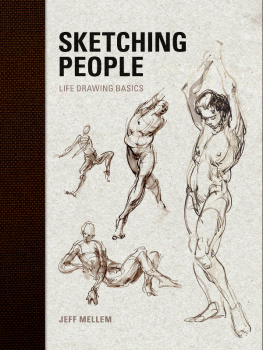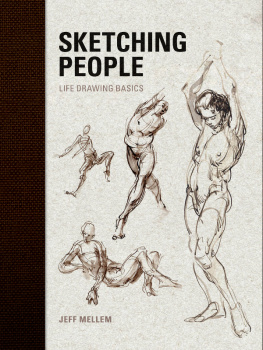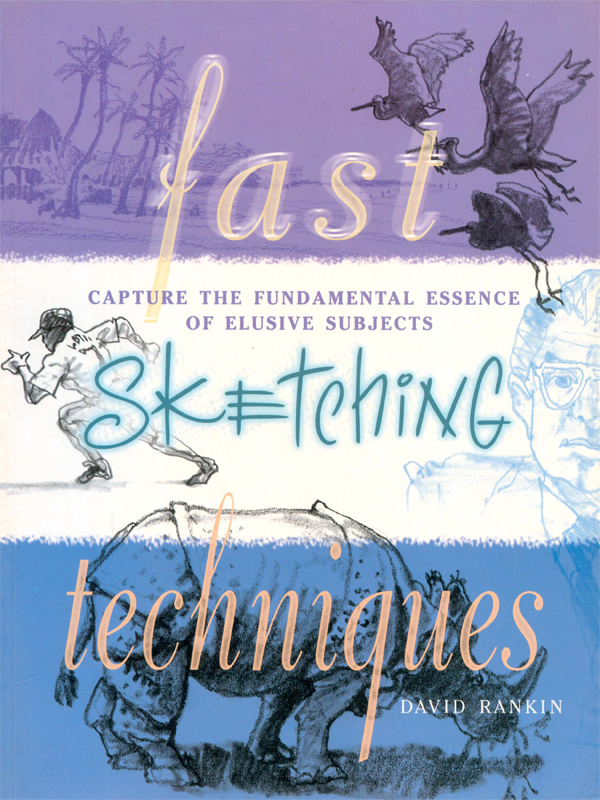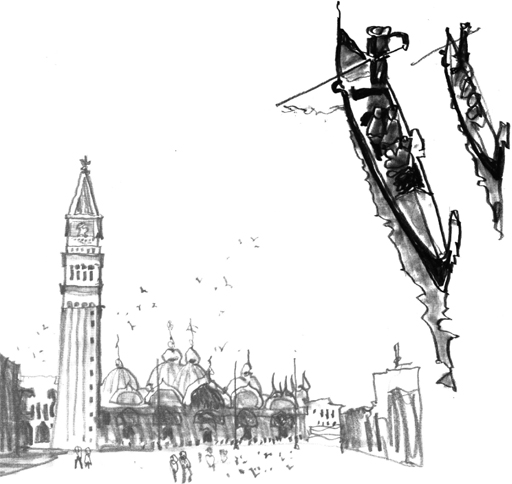

fast
SKETCHING
techniques
David Rankin

NORTH LIGHT BOOKS
CINCINNATI, OHIO
www.nlbooks.com
I'd like to dedicate this book to my wonderful wife, Deanna. She travels the world with me and provides me with another set of artistic eyes and creative ideas.

Fast Sketching Techniques. Copyright 2000 by David Rankin. Manufactured in China. All rights reserved. No part of this book may be produced in any form or by any electronic or mechanical means including information storage and retrieval systems without permission in writing from the publisher, except by a reviewer, who may quote brief passages in a review. Published by North Light Books, an imprint of F&W Publications, Inc., 1507 Dana Ave.,Cincinnati, Ohio 45207. (800) 289-0963. First edition.
Other fine North Light Books are available from your local bookstore, art supply store or direct from the publisher.
Library of Congress Cataloging-in-Publication Data
is available from the publisher.
Designed by David Rankin
Cover designed by Stephanie Strang
About the Author
David Rankin, a graduate of the Cleveland Institute of Art, is an award-winning professional watercolor painter whose paintings have been featured in more than forty-five museum exhibitions in Japan, Sweden, Canada and across the United States. His work has been featured in numerous books and magazines, including publications such as American Artist, Wildlife Art and International Wildlife. His creative efforts take him around the world in search of inspiration for his masterful watercolors.
He is on the board of the world's oldest association of animal and wildlife painters and sculptorsThe Society of Animal Artistsand has twice won its top award, the Award of Excellence. Most recently, his painting In the Heat of the Day was awarded the prestigious Leonard J. Meiselman Memorial Award for Representational Painting at the 1999 annual members exhibition, which opened at The Cleveland Museum of Natural History.
David refers to his work as natural abstraction a term he uses to define his use of realistic images based on very abstract design principles found in nature.
He feels his artistic odyssey really began in 1970, when he made his first extended journey to India for advanced training in his lifelong study of yoga. It was in India, especially during seven summers in Kashmir, that his sketching and painting technique gradually evolved. I often say that it was India herself that changed the way I draw and paint, for it was my extensive travels there that brought to light the inadequacies in my drawing style. I was literally forced to develop more effective methods for creating painting ideas on location as my desire to paint a wider range of subjects grew.
Although his main emphasis is still India, he also paints the Southwest, Florida, the Great Lakes region and his hometown of Cleveland, Ohio.
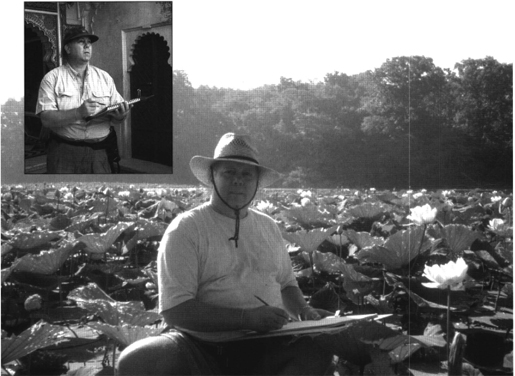
Left: David sketching at the City Palace in Udaipur, India.
Below: David sketching in a lotus field near Huron, Ohio.
Table of Contents
CHAPTER ONE
The Basics
Recognizing the difference between drawing and sketching will help you let go of old drawing styles that are just too slow, allowing you to creatively capture the essence of your subjects.
Using the right sketching materials will allow you to practice easy techniques for fast sketching.
Copying is the best way to enhance your abilities, by seeing how it's done and trying it yourself.
Balancing your use of reference photos vs. sketching will help you thoroughly explore your subjects in the present moment, maximizing your creativity.
Observing your subject intently for recognizable shapes that you can quickly replicate, practicing rapid linework and using a blending tool for a good range of grays are keys to speed.
Paying more attention to retaining visual memories after you look away from a subject can help you sketch better andfaster.
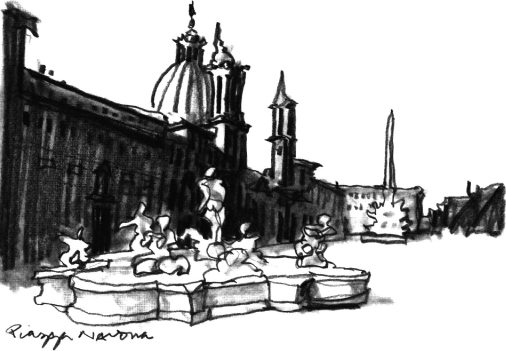
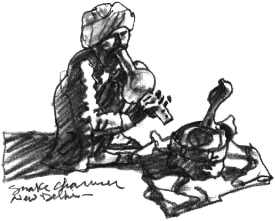
CHAPTER TWO
Landscapes
Capturing the intrinsic beauty of a scene with fast sketching on location helps you determine if it would make a good subject for a more finished painting.
Using different pencil pressures and the blending tool lets you create a variety of values for visual depth and mood.
Looking for and designing values is a good practice in the sketching stage, because values, especially the whites, direct the viewer's eye.
Planning your composition with pencil sketches and Payne's Gray watercolor studies can lead to full-color watercolor studies of a subject, which can pay off in better paintings later.
Quickly sketching the most distinctive features of your main subject and saving secondary subjects for later allows you to stay with the flow of what you are trying to accomplish.
CHAPTER THREE
People
Beginning with simple, rapid linework to outline shapes and establish details, then finishing with shading will give you the ability to quickly create a better likeness.
Using your VCR to freeze subjects with unique postures or expressions and sketching until the pause feature switches off keeps you working fast.
Outlining individual shadow areas with one line while varying your pencil pressures, then blending and shading, helps you define structure.
Sketching self-portraits and available subjects repeatedly improves your self-confidence so you can move on to other people.
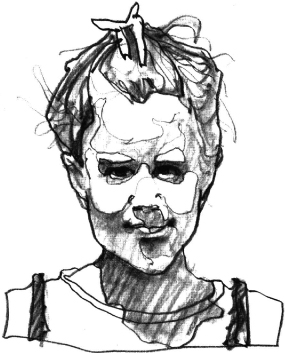
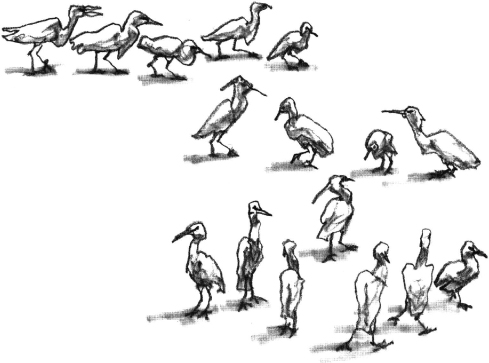
CHAPTER FOUR
Animals
Seeing the shapes that form an animal and quickly sketching them piece by piece, making an effort to sketch parts rather than the whole subject, is the way to achieve better results.
Capturing essentials in your first sketches, then using them as reference for secondary sketches concentrating on subtleties, helps you gather information, clarify details, develop ideas for finished paintings and improve your eye for sketching sequence.
Sketching active subjects takes careful observation coupled with fast sketching, but you can also use technology, such as a camcorder.

